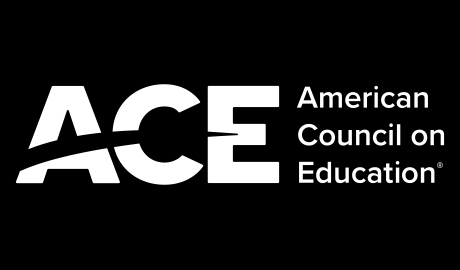Intro to Microeconomics – Online Higher Education Course
In this 100% online Intro to Microeconomics course, students explore key concepts like game theory, labor unions, monopoly, and poverty. And in high-stakes decision-making games, students experience how these abstract concepts play out in real life—seeing the ripple effects of their choices.
A New Way to Learn Microeconomics
In Intro to Microeconomics, students will:
- Understand foundational principles of the economic way of thinking
- Describe important economic concepts, such as supply and demand, elasticity, consumer behavior, production and costs, monopoly, oligopoly, labor markets, poverty, inequality, and discrimination
- Summarize major concepts related to international trade
Gen Ed That Simply Works

Turnkey Courses
With online, asynchronous courses that are ready to run, you can deliver high-quality learning and outcomes predictably and affordably.

Curriculum You Can Trust
Every course is recommended by the American Council on Education. So you can trust the curriculum meets rigorous academic standards.

Captivating Student Experience
Students enjoy cinematic lectures from experts in the field and interactive, mastery-based learning—all in a flexible, 14-week course that fits their schedules.

Unlimited Enrollment
With no minimum or maximum enrollment, students get the courses they need when they need them, so they stay on track in their degree program.
Discover the magic of learning with Intro to Microeconomics
Watch the Trailer
Students learn why small choices have big impact with microeconomics
-
Key Concepts
-
Learning Outcomes
-
Assessments
-
Educator Support
-
World-Class Instructors
Key Concepts Covered
-
Introduction to Microeconomics
- Foundational economic tools
- Supply, demand, and equilibrium
- Consumer surplus and producer surplus
- Price floors and price ceilings
- Elasticity
- Utility maximization
- Behavioral economics
- Production and costs
- Profit maximization
-
Perfect Competition
- Market structures, perfect competition, and long-run supply
- Profit maximization in perfect competition
- Long-run adjustments
- Efficiency in perfectly competitive markets
-
Game Theory, Monopoly, and Oligopoly
- Dominant strategies and Nash Equilibrium
- Games with many players
- Games with a sequence of moves
- Mixed strategies
- Market power and barriers to entry
- Profit maximization under monopoly
- Regulation and antitrust: limiting monopolistic competition
- Oligopoly, duopoly, and cartels
-
Market Failure and Labor Markets
- Introduction to market failure
- External effects
- Solutions to market failure
- Public goods and common pool resources
- Asymmetric information, moral hazard, and adverse selection
- The competitive model of the labor market
- Monopsony
- Unions and minimum wages
-
Poverty, Inequality, and Global Economics
- Absolute and relative poverty
- Income and wealth
- Education and health inequality in the USA
- Discrimination
- Global inequality
- Globalization and international trade
- Absolute and comparative advantage
- Labor: outsourcing, offshoring, and global migration
Learning Outcomes
-
Course Learning Outcomes
- Understand foundational principles of the economic way of thinking
- Describe important economic concepts, such as supply and demand, elasticity, consumer behavior, production and costs, monopoly, oligopoly, labor markets, poverty, inequality, and discrimination
- Summarize major concepts related to international trade
Assessments
-
Quizzes and Exams
- Course quizzes and exams consist of multiple choice, true/false, select all that apply, matching, and open-response questions. All are autograded by the LMS, so educators can spend more time with students and less time grading.
Educator Support & Dashboard
-
Access All Course MaterialEducators and administrators have full access to the Partner Dashboard and all course material from Day 1.
-
View Course MilestonesEasy-to-use tools show milestone dates and deadlines for the cohort, as well as the full weekly course schedule.
-
Monitor Student Progress in Real TimeCoach students throughout the course—from registration to the final exam—with complete reporting on their current course grades, assessment scores, and engagement with course material.
-
Download Student Grades & ProgressEducators and administrators can download student grades and full progress report details in CSV format.
-
Review Student Submissions for Graded AssessmentsEducators and administrators can view student-submitted answers to assignments, quizzes, and exams.
World-Class Instructors
-
World-Class Instructors
We selected a team of charismatic instructors who offer a variety of backgrounds and points of view on microeconomics:
- Cristina Tello-Trillo, Ph.D., U.S. Census Bureau
- Homa Zarghamee, Ph.D., Barnard College
- Rajiv Sethi, Ph.D., Barnard College
- Simon D. Halliday, Ph.D., University of Bristol
- Suresh Naidu, Ph.D., Columbia University
Frequently Asked Questions About Intro to Microeconomics
-
How are Outlier courses structured?Outlier courses are divided into a series of chapters and sections. Each section contains cinematic video lectures and active learning (our interactive digital textbook) that help students learn the course content. Students demonstrate their knowledge on graded assessments, including mastery-based quizzes they can retake up to 5 times.
-
Are there any course prerequisites?No. However, students cannot get credit for both Intro to Microeconomics and Principles of Economics. Carefully consider which course better suits your students’ educational and transfer credit needs, and choose accordingly.
-
Are there any student eligibility requirements?
Students must be at least 13 years old. Students who enroll in an Outlier course should be ready for the academic rigor of college-level coursework and carefully consider their existing responsibilities and dedication.
-
What technology does my school need to take Outlier courses?
Each student must have access to technology that meets the technical requirements noted in this Help Center article.
-
What is the minimum/maximum enrollment?
All Outlier courses have unlimited enrollment, with no minimum or maximum. So they easily adapt to your scheduling and staffing needs.
-
What support is available for educators?
Your educators get complete visibility into student progress in the Partner Dashboard, including:
- Progress monitoring based on the course syllabus and schedule
- Grade pacing and forecasting based on students’ performance
-
Is the course completely online?Yes, Outlier courses are 100% online and asynchronous. Your students can learn during any class period—anywhere in the universe with Wi-Fi and a laptop or desktop computer.